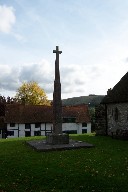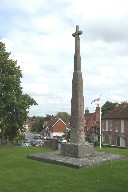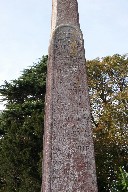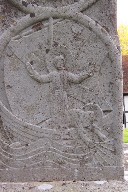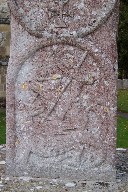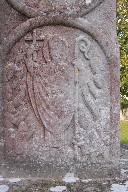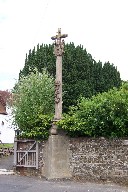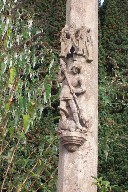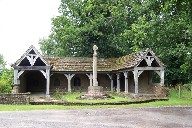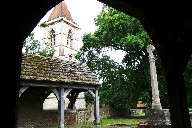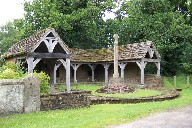  WAR MEMORIALS Dotted across the wastes of Bodmin Moor stand the remains of many pre-historic stone shafts, ancient Pagan crosses, sometimes carved with writhing snakes, foliage and rosettes. By the sixth century A.D. they were replaced, especially in the north of England, by elaborately decorated Celtic crosses, found even more commonly in Ireland. These images of the past co-exist, marking the passage from Paganism to Christianity and occasionally one can see Odin, Thor and Loki on the same shaft as the crucifixion of Christ. We rarely encounter them in the south of England, where the Market Cross was often the centre of the community, but more recently the focus has been the War Memorial. In various forms, there are more than 65,000 across England. Put up after the first World War, they were designed to commemorate the hundreds of thousands who fell in the conflict, and the names of others who died in World War II were often added. Mercifully there were less of them. They are found in many different forms, from the huge cenotaph on Southsea Common to a simple Roll of Honour on the wall of a village church. But the most familiar is perhaps the churchyard cross. One of the most elegant is at South Harting, a tall, tapering cross designed by no less a craftsman than Eric Gill. A native of Sussex, he studied in Chichester and London, before moving to Ditchling in 1913 and founding the Guild of St. Joseph and St. Dominic the following year. A devout Catholic, his faith contrasted strongly with his sexually explicit carvings, and his adultery, incest and bestiality, all recorded in his private diaries, would surely have put him in jail had they been known. But as a sculptor, calligrapher and craftsman, it was the unequalled clarity of line that made his work so sought after. His beautiful lettering can
be seen on the Harting Memorial: Remember the
men who gave their lives in the war of 1914-1919.
May they rest in peace. Thirty-five names
follow, and a further fifteen were added after
the second conflict. But the most impressive memorial must at Blackmoor. Here a three sided cloister contains six commemorative metal plaques placed on the walls, together with a lion’s head with the mouth forming a water spout. They bear the names of thirty-six men of the village who fell during the First War and a further nine in the Second. In the centre stands a stone cross with a tapered column and plinth set on a three step hexagonal base. It stands between Waterhouse’s church of 1868 and the old school, and was designed by no less an architect than Sir Herbert Baker in 1920. Born in 1862, Baker was one
of the most famous British architects of the
early 20th century and his work is found all over
the world. He designed both South Africa House in
Trafalgar Square and India House in Aldwich, and
it is no coincidence that some of his greatest
achievements are found in those two countries.
Closer to home he also designed the War Memorial
Cloister at Winchester College.
|
